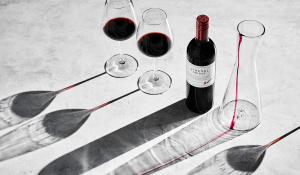Decanters are more than just decorative – they’re tools to help you get the most out of your wine. Find out how (and when) to use them with these easy tips.
What is decanting?
To decant simply means to pour from one vessel to another. Since the 17th century, decanting wine prior to service has been customary – initially for the practical purpose of transferring wine from large amphoras to smaller, more easily handled vessels. While still used for their aesthetic impact today, decanters are most commonly used as a tool to ensure a wine is served at its best.
Why is it important?
Decanters are a great way to turn a bottle of wine into a statement table centrepiece – but they’re more than just decorative. Typically, decanting a wine will serve one of two purposes: to aerate the wine or to separate it from idle sediment that accumulates with age. The shape and size a vessel will generally indicate which purpose it is intended for. Decanters with a large base increase the surface area of the liquid, allowing it to come into contact with more oxygen and aerate the wine. Decanters with fine, narrow necks are designed to trap and remove sediment while pouring.

Decanters with fine necks are perfect for decanting aged wines which may have accumulated sediment.
Using a decanter to aerate your wine prior to serving can help to soften the sharp tannins present in young, medium-to-full bodied wines. It can also ‘open up’ the wine, amplifying subtle flavours and aromas. Tannins and acid naturally soften with bottle age, so wines that have been in the cellar for a while will typically require less decanting time prior to serving. For wines under 10 years of age, aim for between one and four hours decanting time. For anything over 10, decant for an hour maximum – for wines aged 20 years and over its best to decant briefly or not at all.
When should you use a decanter?
Almost all red wine varieties will improve with decanting. For a plush South Australian shiraz like the Penfolds St Henri, decanting will further awaken delicate earth and mocha-like characters, while integrating silky, polished tannins. Penfolds recommends the method of double-decanting, which involves pouring the wine into a vessel and then refilling the original bottle once it has been rinsed with filtered water – this makes it possible to decant multiple styles or vintages at once without confusion. Fuller-bodied white wines, like the Penfolds Yattarna and Reserve Bin A Chardonnay, will also benefit from aeration prior to serving.

Wide-necked decanters make double-decanting easy – and help younger wines ‘open up’.
TOP TIPS
- Pick your vessel:opt for a finer-necked decanter for aged styles or a large-based one for younger, more tannic wines.
- Watch the clock:young, full-bodied reds and whites can be decanted for a while without damaging subtle flavours and aromas. For more fragile, older wines ensure you decant for no more than an hour.
- Double up:double-decanting is a great way to aerate a few wines at once without confusing them – and without the need for multiple vessels. Just ensure you rinse out older bottles before you re-fill them to remove any stray sediment.
https://www.winecompanion.com.au/resources/tips/a-guide-to-decanting-wine

